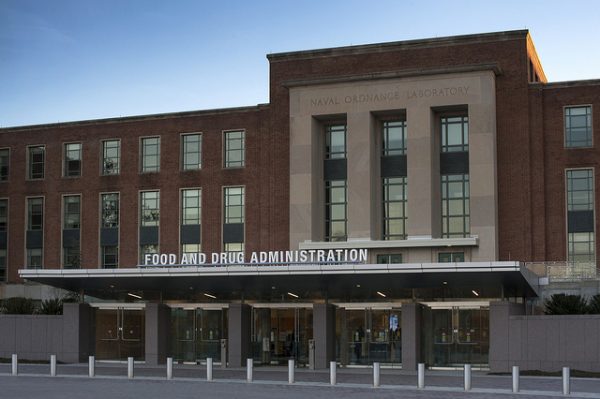
The approval last week of a new drug for patients with multiple myeloma who have exhausted the most common backbone therapies for the disease may have pleased investors, sending the developer’s shares skyrocketing. But it has also drawn harsh criticism from some hematology-oncology experts.
Last week, the Food and Drug Administration granted accelerated approval to Newton, Massachusetts-based Karyopharm Therapeutics’ Xpovio (selinexor) for so-called “penta-refractory” patients, meaning those who have failed on five therapies across three key drug classes. The approval was based on response rate data from the Phase IIb STORM study, as well as data from the Phase III BOSTON study that have not been disclosed publicly.

The Funding Model for Cancer Innovation is Broken — We Can Fix It
Closing cancer health equity gaps require medical breakthroughs made possible by new funding approaches.
But while the news made investors happy – Karyopharm’s stock shot up 36 percent on the Nasdaq – some doctors were not so excited.
“Selinexor (Xpovio) approval & pricing highlights what’s wrong with our system,” Mayo Clinic multiple myeloma specialist Dr. Vincent Rajkumar wrote in a series of tweets that several prominent myeloma experts liked or retweeted. “I doubt I’ll recommend or use this drug, till I see data from [randomized controlled trials].”
An FDA spokesperson referred to the agency’s announcement of the approval. Karyopharm defended the drug.
“Patients with highly refractory multiple myeloma have a very poor prognosis and are in dire need of treatment, especially since the median survival in this population is currently expected to be in the range of three to five months,” read an emailed statement from the company. The statement noted that the nearly 40 percent of patients who achieved at least a minimal response had a median overall survival of 15.6 months, compared with 1.7 months for those who progressed or who were not evaluable.

Health Executives on Digital Transformation in Healthcare
Hear executives from Quantum Health, Surescripts, EY, Clinical Architecture and Personify Health share their views on digital transformation in healthcare.
There’s no doubt that the penta-refractory patients represent a significant unmet need. Xpovio’s label specifies that they must have failed on two proteasome inhibitors, two immunomodulators and one CD38-targeting monoclonal antibody. Takeda Pharmaceutical Co.’s Velcade (bortezomib) and Ninlaro (ixazomib), along with Amgen’s Kyprolis (carfilzomib) are three marketed proteasome inhibitors. Celgene’s Thalomid (thalidomide), Revlimid (lenalidomide) and Pomalyst (pomalidomide) are immunomodulators. And Johnson & Johnson’s Darzalex (daratumumab) is the only approved anti-CD38 antibody.
But despite that unmet need, Rajkumar raised a number of questions about the data that led to the approval. He wrote that the 25.3 percent response rate for Xpovio and the steroid dexamethasone observed in STORM would have been lower with Xpovio as a single agent. Moreover, he continued, there were too many side effects; the dosing was incorrect; the study had no control group; and the FDA’s Oncologic Drugs Advisory Committee (ODAC) had voted against the drug.
“An approval in the face of this is baffling,” Rajkumar wrote.
It was in light of issues like these that ODAC voted in February 8-5 to recommend delaying approval until data from the Phase III BOSTON study were available, pushing the deadline for the agency to reach a decision from April to June. Most ODAC members who voted to recommend the delay expressed reservations about the drug’s safety-efficacy profile. The FDA’s accelerated approval was based in part on confidential data from BOSTON provided by the study’s data safety monitoring board, to which the company itself was not privy.
A member of ODAC agreed with Rajkumar’s concerns, especially in light of the BOSTON data that led to the approval not being released to the public. The data that are available from STORM do not provide a complete picture of the drug’s safety or efficacy, and unmet clinical need alone does not give sufficient reason to approve the drug.
“To trade on hope and say we have to give people something – I don’t think that’s really right,” the member said, adding that the agency should have waited to approve the drug until the BOSTON data were made public.
The ODAC member also cited the label’s lack of a black-box warning about toxicity as problematic. But while the label should have carried one, it is also incumbent on physicians to discuss toxicities with their patients, the member said.
Some doctors agreed with Rajkumar.
“[The] drug should not have been approved, in my opinion,” wrote Dana-Farber Cancer Institute leukemia specialist Dr. David Steensma, who had used Xpovio in an acute myeloid leukemia study and found it was difficult for patients to tolerate, in an email. In addition to the negative ODAC vote and high incidence of adverse side effects, Steensma cited a low response rate and lack of a proven survival benefit in a population where life expectancy is short enough that a trial to specifically measure survival would have been straightforward.
According to the ODAC briefing document, 89.4 percent of patients experienced at least one treatment-related adverse event at Grade 3-4, meaning it was deemed serious or life-threatening. There were also two deaths considered related to treatment.
Rajkumar compared Xpovio to Novartis’ Farydak (panobinostat), which met more blahs than applause after its early 2015 approval in third-line myeloma due to its unfavorable safety-efficacy profile.
Xpovio’s price tag also raised eyebrows.
Steensma called it “ridiculous to charge $22,000 per month for such a marginal drug.” Rajkumar went further. “It’s laughable to think selinexor is worth $22,000. I’d say $2,000 is too high,” he wrote in his tweet, calling the price “outrageous.”
Karyopharm still defended the drug’s pricing.
“With respect to Xpovio’s pricing, we believe it reflects the cost of innovation and value of delivering a needed new option to a patient population with very high unmet medical needs,” the company’s statement read.
Photo: FDA, Flickr (free of all copyright for use and redistribution without restriction)
UPDATE: This story has been updated to include additional expert commentary.








